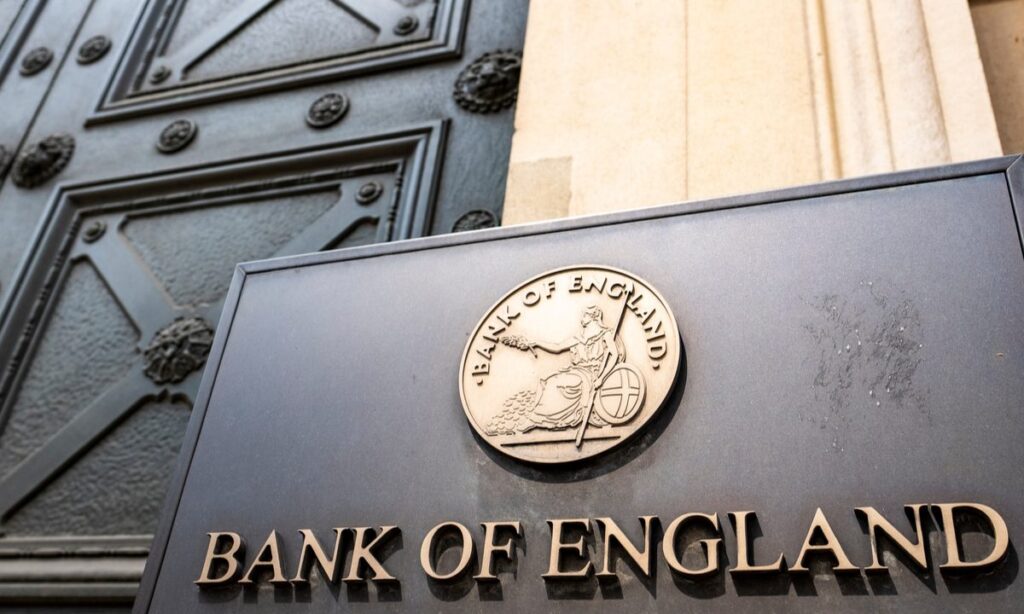Thumzup Media Corporation has announced plans to dramatically expand its presence in the cryptocurrency sector following a $50 million funding round.
The firm, which began as a social media marketing business, is now pivoting toward large-scale crypto mining and targeted blockchain investments.
New Strategy and Investments
The company revealed it will use part of the funding from its $10-per-share offering to develop “state-of-the-art cryptocurrency mining infrastructure.”
It is currently engaging with mining technology providers to accelerate the buildout.
Thumzup also confirmed it now holds 19.1 Bitcoin, having first entered the crypto market in early January.
This move aligns with a trend among public companies seeking to bolster their share value through cryptocurrency holdings.
Trump Family Connection
A notable shareholder in Thumzup is Donald Trump Jr., who purchased 350,000 shares in July for nearly $3.3 million, according to regulatory filings.
The purchase adds to the Trump family’s growing presence in the crypto space.
Bitcoin Price Surge
Thumzup’s expansion comes as Bitcoin hit an all-time high of $124,128 before slightly cooling to $123,683.
Market optimism has traders eyeing a potential push above $125,000.
Thumzup has also outlined plans to diversify its holdings to include Dogecoin, Litecoin, Solana, XRP, Ether, and USDC, with approval to hold up to $250 million in crypto.
Stock Market Performance
Shares in Thumzup rose 7.62% in after-hours trading on Wednesday to $10.87, recovering from earlier losses.
The stock is up nearly 195% in 2025, with its latest all-time high of $15.46 recorded on August 8.
However, it faced a sharp drop earlier in the week after announcing a preferred stock offering, which was later amended.
Global Crypto Holdings Trend
Other firms are also increasing their Bitcoin reserves despite the recent price surge.
Sweden’s H100 Group recently bought 45.8 BTC, bringing its total to 809.1 BTC — the fourth-largest holding among European public companies.
The move cements the ongoing trend of corporate Bitcoin accumulation, even at record-high prices.
President Donald Trump signed a significant executive order on Thursday, allowing Americans to allocate cryptocurrencies and other alternative assets within their 401(k) retirement accounts and other defined-contribution plans.
The order directs the U.S. Department of Labor to reevaluate existing restrictions on investments such as digital assets, private equity, and real estate in these plans.
The change marks a shift in federal policy and has drawn both enthusiasm and concern from across the financial and crypto communities.
Trillions in Retirement Capital Now in Focus
As of Q1 2025, total U.S. retirement assets stood at $43.4 trillion, according to the Investment Company Institute and the Federal Reserve Board.
Of that, more than $12 trillion came from defined-contribution plans, including $8.7 trillion held in 401(k)s.
With such a massive capital base, even a small allocation to crypto could significantly impact the market.
Crypto Leaders Applaud the Decision
Matt Hougan, Chief Investment Officer at Bitwise, said the executive order could fundamentally reshape the crypto market.
He described the development as the beginning of a “slow, steady, consistent bid” from retirement savings that could lead to “higher returns and lower volatility.”
Hougan also emphasized the suitability of crypto in retirement portfolios, calling it “the best-performing asset class in the world over the past decade.”
Ji Hun Kim, CEO of the Crypto Council for Innovation (CCI), said the executive order signals crypto’s growing acceptance in mainstream finance.
“Americans should have the opportunity and freedom to include these investments within their retirement plans,” Kim stated.
He added that CCI appreciated the administration’s “continued commitment to clear policies” and making the U.S. “the crypto capital of the world.”
Infrastructure and Regulation Take Center Stage
Abdul Rafay Gadit, co-founder of ZIGChain, said the move paves the way for the infrastructure necessary to support tokenized investment products at scale.
He pointed out the increasing regulatory clarity under SEC Chairman Atkins, suggesting that a “unified framework” is starting to emerge.
However, not all reactions were without caution.
Michael Heinrich, CEO of 0G Labs, called the development a “watershed moment” for the industry.
Still, he warned of the dual nature of the shift, saying, “Done right, this could unlock trillions in retirement capital for Bitcoin and other compliant assets. Done poorly, it risks political and financial backlash.”
He stressed that critical implementation details—such as qualifying tokens, custody arrangements, and regulatory safeguards—would determine the success or failure of the initiative.
Bitcoin Seen as Early Beneficiary
Joshua Krüger of the dEURO Association believes Bitcoin will be the first asset to benefit from the change due to its institutional backing.
“Asset managers such as BlackRock, Fidelity and Franklin Templeton are already lined up with corresponding offerings,” he noted.
He said other cryptocurrencies may follow in the medium term, but only after establishing solid regulatory and technical foundations.
Tezos co-founder Arthur Breitman echoed these views, noting that the scale of the U.S. retirement market could help legitimize crypto as an asset class.
While supporting more options for savers, Breitman expressed concerns over misinformed investment choices.
He warned that private assets in retirement accounts often suffer from “high fees, hard-to-determine pricing, and manager manipulation to mask volatility.”
Critics Warn of Financial Risks
Peter Schiff, a long-time critic of crypto, voiced strong opposition to the move.
He argued that allowing crypto in 401(k)s could worsen the already serious U.S. retirement savings gap.
“Most Americans have saved far less than needed to have any hope of retirement,” Schiff posted on X.
“By allowing Americans to gamble what little retirement savings they have in their 401(k)s on Bitcoin and other cryptos, Trump just made this problem much worse.”
Bitcoin ended July 2025 with its most impressive monthly close to date, registering $115,800 on Coinbase, according to Cointelegraph Markets Pro and TradingView.
Despite some turbulence caused by macroeconomic developments, the monthly candle solidified Bitcoin’s momentum and marked the first time the cryptocurrency finished a month above the $115,000 threshold.
The last-minute pullback in Bitcoin’s price did little to undermine its bullish trajectory.
Markets were shaken after U.S. President Donald Trump unveiled a range of new tariffs, including increasing those on Canadian imports from 25% to 35%.
These moves impacted risk assets across the board, with the S&P 500 continuing its four-day losing streak to close at 6,339.
Market Sentiment Cools Slightly
The market’s risk-off reaction was also reflected in the Fear & Greed Index, which dipped by 10 points to settle at 65 — still within the “greed” zone.
Despite these headwinds, analysts remain upbeat about Bitcoin’s trajectory.
Crypto analyst Mags interpreted the recent dip to $115,000 as a bullish retest of the neckline in an inverse head-and-shoulders pattern, suggesting that the uptrend remains intact.
“The measured target of this pattern on the weekly chart is $172,000,” Mags posted on X.
“It’s just a matter of time before Bitcoin price goes vertical.”
Traders Eye August for Further Gains
Michaël van de Poppe, a well-known crypto trader and entrepreneur, echoed similar optimism about the coming months.
“The markets have started correcting, which means that it’s time to accumulate your next positions for the next run,” van de Poppe stated on X.
“Perhaps August is a month of stabilization, and we’ll go back up later in the month for Altcoins and Bitcoin.”
Price Range Remains in Bullish Territory
Bitcoin continues to trade within a tight band of $115,000 to $121,000, with data suggesting that a larger breakout remains likely.
CoinGlass reported that BTC finished July with an 8.13% gain, aligning with historical post-halving trends.
However, the month of August traditionally hasn’t been as favorable, with average returns of only 1.61%.
Post-Halving Augusts Tell a Different Story
Despite August’s usual reputation, Bitcoin has historically performed strongly during post-halving years.
In 2013, 2017, and 2021, Bitcoin saw respective August gains of 30%, 65%, and 14%.
Analyst Alpha Finder pointed this out on X, saying, “In 2017 and 2021, $BTC did massive returns in the month of August.”
Another user, Crypto B, added, “If history repeats itself, get ready for a strong August.”
While past performance is no guarantee of future results, the historical context provides further support to bullish sentiment heading into the second half of Q3.
The XRP community is facing fresh warnings after Ripple co-founder Chris Larsen transferred 50 million XRP tokens to exchanges, sparking fears among investors of being used as “exit liquidity.”
The transaction triggered a wave of concern from analysts and market watchers who believe the move may be part of a larger sell-off strategy.
J.A. Maartunn, a contributor to the on-chain analytics firm CryptoQuant, weighed in on the situation via social media platform X.
“Don’t get dumped on,” Maartunn cautioned.
“Don’t be the exit liquidity. Protect yourself.”
Massive Holdings Raise Red Flags
Larsen’s transfer came just after XRP briefly surged to highs near $3.60 on July 17, approaching its all-time record.
Despite the rally, the excitement was quickly tempered by outflows from a wallet linked to Larsen, prompting mixed reactions.
Some interpreted the move as normal profit-taking, while others accused him of exploiting the price peak to offload tokens.
Maartunn highlighted that the 50 million XRP moved represents only a small portion of Larsen’s reported holdings.
According to him, Larsen still holds around 2.58 billion XRP, worth approximately $8.83 billion at current prices.
“If $200M was just the warm-up… what’s next?” he asked.
Market Pullback After Rally
The recent sell-off by Larsen coincided with a broader correction in XRP’s price.
After surging as part of a wider altcoin rally—following Bitcoin’s consolidation phase—XRP has pulled back around 13%.
It is currently trading at $3.18, according to Cointelegraph Markets Pro and TradingView data.
The pullback, coupled with Larsen’s wallet activity, has added to investor caution.
Other market analysts, including prominent trader ManLy, echoed the concerns about large holders dumping tokens at the expense of retail investors.
Comparisons to Bitcoin Whale Activity
XRP’s situation mirrors recent volatility seen in the Bitcoin market.
Earlier this month, a Satoshi-era whale liquidated 80,000 dormant BTC, sending BTC/USD sharply lower to around $114,500 before bouncing back.
Galaxy Digital reportedly handled that transaction, and the sudden move triggered over $500 million in liquidations across the crypto space, according to CoinGlass data.
While Bitcoin quickly recovered, the scale of such transactions highlights the ongoing risks faced by cryptocurrency investors when large holders suddenly move their assets.
Cautious Sentiment Prevails
For now, analysts are urging caution.
XRP’s potential for future growth remains intact, but the looming threat of further sell-side pressure from insiders like Larsen may dampen short-term investor enthusiasm.
Many in the XRP community are now watching Larsen’s wallet closely, wary of becoming collateral damage in a larger exit strategy.
As Maartunn emphasized, “Protect yourself.”
Venture capitalist Tim Draper believes macroeconomic forces are reshaping Bitcoin’s traditional market behavior, particularly its four-year halving cycle.
Draper, a founding partner at Draper Associates, argued in a recent interview that the gradual decline of the U.S. dollar could dampen the effects of Bitcoin’s halving events—long known to trigger significant price movements in the crypto market.
“Between 10-20 years from now, the dollar will be extinct,” Draper told Cointelegraph.
“The world is changing, and we are watching it happen. We are right in the center of an anthropological leap forward,” he said.
Bitcoin’s Role as a Safe Haven
Draper pointed to growing investor interest in Bitcoin as a hedge against flawed monetary policies, rising inflation, global instability, and lack of trust in traditional financial institutions.
He described Bitcoin as an “escape valve” amid these pressures, noting that its appeal continues to grow due to its fixed supply and decentralized nature.
Shifting Focus from the Halving Cycle
Bitcoin halvings, which reduce the number of new coins entering circulation, have historically triggered bull markets.
However, Draper said that while the halving still has some influence, larger macroeconomic dynamics may now be more decisive in shaping Bitcoin’s trajectory.
“The halvings may have less of an effect if Bitcoin runs against the dollar the way it has, because it will probably go for a prolonged period,” Draper said.
“It will still be affected in some way by that four-year cycle, but I think the effect will dampen. I think there will be a macro driver that pushes Bitcoin along, and I think the macro driver will be a bigger deal than the halvings.”
Debate Over Bitcoin’s Maturity
The idea that Bitcoin is evolving into a macroeconomic asset is not universally accepted.
Xapo Bank CEO Seamus Rocca recently said that the four-year cycle is still valid, suggesting that halving events remain relevant.
Others believe that Bitcoin has matured past its early speculative cycles and is now more reactive to broader economic shifts.
Global Conditions Favoring Bitcoin
Draper’s perspective aligns with other experts who expect geopolitical and economic turbulence to benefit Bitcoin and other hard-money alternatives.
In February, Bitwise analyst Jeff Park suggested that ongoing inflation, protectionism, and the weakening U.S. dollar could drive global Bitcoin adoption.
Meanwhile, the U.S. government continues to push dollar-backed stablecoins to preserve the dollar’s dominance by increasing demand through blockchain integration.
Skepticism of Stablecoins’ Longevity
Despite this strategy, not everyone sees stablecoins as a permanent solution.
Bitcoin advocate Max Keiser criticized dollar-denominated stablecoins as a temporary fix, predicting they will eventually be outpaced by gold-backed tokens and Bitcoin itself.
As macroeconomic conditions change and digital currency becomes increasingly mainstream, Draper and others see the dollar’s future as uncertain—and Bitcoin’s as more integral to global finance.
SharpLink Gaming, supported by Ethereum co-founder Joseph Lubin, has taken another aggressive step into the crypto market by drastically expanding its plans to acquire Ether (ETH).
The company has boosted the equity it intends to sell, signaling a deep commitment to building one of the world’s largest corporate ETH treasuries.
Equity Offering Expands from $1B to $6B
In a new filing submitted to the U.S. Securities and Exchange Commission (SEC) on Thursday, SharpLink revealed it would raise its common stock sale authorization by an additional $5 billion.
This brings the total offering size to $6 billion, up from the $1 billion target laid out in a previous May 30 filing.
The firm reaffirmed its intention to funnel most of the proceeds into buying Ether.
“We intend to contribute substantially all of the cash proceeds that we receive to acquire Ether,” the company stated in the prospectus supplement.
“We also intend to use the proceeds from this offering for working capital needs, general corporate purposes, operating expenses and core affiliate marketing operations.”
If SharpLink were to use the full $6 billion for ETH purchases at current prices, it would hold approximately 1.38% of the total circulating ETH supply.
SharpLink Sets Sights on 1 Million ETH
SharpLink recently claimed the title of largest corporate ETH holder.
In a recent post on X (formerly Twitter), the company suggested that it plans to eventually hold 1 million ETH.
As of Tuesday, the firm had accumulated more than 280,000 ETH.
Nearly all of it — 99.7% — has been staked, allowing the company to earn additional income from the network.
Between June 2 and July 15, SharpLink earned 415 ETH in staking rewards, valued at $1.49 million.
On the heels of its latest regulatory filing, SharpLink added another 32,892 ETH, worth about $115 million.
This brought its total ETH acquisitions over the past nine days to $515 million, according to blockchain analytics firm Lookonchain.
Implications for Ethereum Ecosystem
SharpLink’s aggressive accumulation has even outpaced the Ethereum Foundation’s own ETH holdings.
This milestone is seen as a bullish signal for Ethereum’s long-term fundamentals.
Galaxy Research described the move as a “positive catalyst for the ecosystem,” suggesting it demonstrates strong corporate conviction in Ethereum’s future.
SBET Shares Decline Despite Bullish ETH Play
Despite its crypto-heavy strategy, SharpLink’s stock (SBET) declined 2.62% on Thursday, closing at $36.40.
It dropped a further 4.95% in after-hours trading to finish at $34.60, according to Google Finance.
Year-to-date, SBET is still up 350%.
However, it has fallen 54% from its May 29 high of $79.21.
The company reported a 24% year-over-year decline in revenue for the March quarter.
Its net profit margin also took a significant hit, decreasing by 110%.
SharpLink is expected to report its next quarterly earnings on August 13, as listed on Nasdaq.
Over the past month, corporate Ethereum treasuries have significantly expanded, collectively acquiring more than $1.6 billion in Ether (ETH).
Recent disclosures show that top firms have accumulated over 545,000 ETH in just 30 days, amid a surge in institutional interest driven by market optimism around Ethereum’s long-term utility.
One of the most notable disclosures came from BitMine Immersion Technologies.
The company, chaired by Fundstrat’s Tom Lee, reported total Ether holdings of 163,142 ETH.
At the current market valuation, this stash is worth approximately $480 million.
Lee compared this buying behavior to that of MicroStrategy’s Bitcoin strategy, suggesting that firms acquiring even 5% of Ethereum’s total supply may benefit from what he termed a “Wall Street put.”
He believes Ethereum is gaining similar institutional traction to what Bitcoin previously enjoyed.
SharpLink Leads Ethereum Accumulation
At the forefront of this Ethereum buying spree is SharpLink, a gaming platform founded by Joseph Lubin.
SharpLink purchased 10,000 ETH on July 11, followed by 16,370 ETH on July 13, and an additional 24,371 ETH worth $73.2 million on July 15.
These acquisitions bring its total ETH holdings to more than 255,000, making it the largest corporate holder of Ether to date.
Lubin, who is also the founder of Consensys, jokingly referred to himself as a “self-appointed representative of The League of Extraordinary ETH Accumulator Gentlemen,” acknowledging BitMine and others for ramping up their acquisitions.
Broader Corporate Interest in Ethereum
The Ethereum accumulation trend isn’t limited to just two firms.
Bit Digital, a digital asset platform, holds over 100,000 ETH.
Blockchain Technology Consensus Solutions (BTCS) has also moved aggressively, raising $62.4 million to grow its Ethereum reserves to 29,122 ETH.
Meanwhile, GameSquare announced on July 8 that it plans to build a $100 million Ethereum treasury as part of a broader strategic investment.
These moves reflect a growing belief in Ethereum’s role as a critical asset in the evolving digital economy.
ETH Funds See Record Inflows
This surge in corporate ETH acquisitions coincides with a strong performance in Ethereum-based digital investment funds.
CoinShares reported that these funds posted $990 million in inflows last week, marking their twelfth consecutive week of positive flows.
It was also the fourth-largest weekly inflow on record.
Year-to-date, Ethereum funds have attracted more than $4 billion in capital.
Nearly 30% of that came in the past two weeks alone, signaling a steep rise in institutional appetite.
According to CoinShares, Ethereum inflows now represent 19.5% of all assets under management for global Ether funds, compared to just 9.8% for Bitcoin funds.
ETH Price Action Reflects Growing Demand
Ethereum’s price climbed above $3,000 for the first time since February on July 11, though it later dipped slightly below that mark.
Despite the pullback, ETH still posted a 17% gain for the week, underlining renewed market confidence driven in part by these large-scale corporate and institutional investments.
Bank of England (BoE) Governor Andrew Bailey has issued a stark warning regarding the growing role of stablecoins in the financial system, arguing that banks should avoid issuing these crypto-linked tokens due to the systemic risks they pose.
In an interview with The Sunday Times, Bailey said stablecoins could undermine the global financial system and weaken sovereign control over national currencies.
Instead, he believes the Bank of England should prioritize tokenizing deposits within traditional banking institutions.
Bailey emphasized that the UK central bank should not pursue a central bank digital currency (CBDC), distancing itself from the trend of government-backed digital assets.
New Role Brings Global Focus
Bailey’s remarks come as he steps into a new position as chairman of the Financial Stability Board (FSB), an international regulatory body tasked with monitoring and making recommendations about the global financial system.
This role gives him a platform to influence how stablecoins are treated not just in the UK but globally.
His comments suggest he may use the position to curb the rapid expansion of the stablecoin sector.
Stablecoins, which are typically pegged to fiat currencies like the US dollar or euro, are a dominant force in the crypto market.
They enable cross-border transactions without relying on traditional banking infrastructure, which can increase access to stable currencies in regions with weak financial systems.
U.S. Embraces Stablecoin Regulation
Bailey’s warning contrasts with the approach taken in the United States.
The Trump administration has placed stablecoin regulation high on its policy agenda, viewing the technology as a strategic asset.
At the White House Digital Asset Summit in March, US Treasury Secretary Scott Bessent said stablecoins would help cement the dollar’s role as the global reserve currency.
Stablecoins Backed by Traditional Assets
Most stablecoins in circulation are overcollateralized, backed by cash or highly liquid instruments like short-term U.S. Treasury bills.
This model has gained favor among U.S. regulators, who argue it could reduce inflationary pressure by increasing the global demand for American debt securities.
With widespread access to these instruments via mobile devices and digital wallets, the U.S. government sees an opportunity to expand dollar reach and influence.
Calls for Cohesive U.S. Policy
Federal Reserve Chair Jerome Powell has also voiced support for a comprehensive approach to stablecoin regulation in the U.S., calling for clearer and unified policy measures.
However, officials in Europe, including Bailey, have expressed concern that widespread adoption of dollar-based stablecoins could destabilize other currencies such as the euro.
There are growing fears within the EU that stablecoins could disrupt financial sovereignty and shift economic control away from national institutions.
Diverging Approaches Signal Global Debate
Bailey’s firm opposition to stablecoins, combined with his leadership role at the FSB, sets the stage for further regulatory scrutiny of the crypto industry.
While the U.S. moves to integrate stablecoins into its financial strategy, European officials are signaling resistance to allowing such assets to gain widespread use without stronger oversight.
The differing approaches suggest that stablecoins will remain a hot-button issue in global financial policy for the foreseeable future.
Despite Bitcoin hitting new all-time highs last week, retail investors have been notably absent from the action, according to market analysts.
Meanwhile, institutional interest has surged, particularly in the form of spot Bitcoin ETFs, which saw more than $1 billion in inflows on both Thursday and Friday — a back-to-back milestone never previously achieved.
Institutional Surge Behind Latest Price Move
Bitwise head of research André Dragosch observed in a Friday post that although Bitcoin is soaring, mainstream interest has yet to catch up.
“Bitcoin is at new all-time highs but retail is almost nowhere to be found,” he wrote, referencing data showing weak Google search trends for the term “Bitcoin.”
This suggests the current rally is primarily fueled by institutions, not individual investors.
Search Trends Fail to Reflect Price Surge
Google Trends data supports this narrative.
Between June 29–July 5 and July 6–12, global searches for “Bitcoin” increased by just 8%, even as Bitcoin’s price broke past its previous all-time high of $111,970 and continued climbing to $118,780 by Friday.
This subdued retail interest contrasts sharply with the surge seen in November 2024, when search interest peaked following Donald Trump’s election win.
At that time, retail engagement helped propel Bitcoin past the $100,000 mark for the first time.
Retail Sentiment: “Missed the Boat”
Some crypto commentators believe that retail investors are sitting out because they feel priced out of the market.
“I think a lot of retail folks find out the price of one Bitcoin is 117k and think, nahhh I missed the boat and don’t even give it a second thought,” said Bitcoin analyst Lindsay Stamp.
Cedric Youngelman, host of the Bitcoin Matrix podcast, shared a similar sentiment, asking his followers, “At what Bitcoin price do you think retail wakes up? I’ll go first. I don’t think they’re coming for a long time.”
Analysts Say Rally Still Has Momentum
Despite low retail participation, market experts believe the current rally has more room to run.
Bitcoin on-chain analyst Willy Woo commented, “This run has plenty of legs left in it.”
The continued interest from institutional players suggests that Bitcoin’s momentum is far from over.
Spot ETFs Remain the Main Driver
Spot Bitcoin ETFs had an exceptionally strong week, pulling in a total of $2.72 billion over five trading days, according to Farside data.
This wave of capital suggests institutional demand remains robust.
However, the trend has raised questions about how to measure actual retail interest in the current market landscape.
Cointelegraph recently noted that if the ultimate holders of Bitcoin ETF shares are retail investors, then interpreting on-chain data could become more complex.
Conclusion
While Bitcoin continues to scale new heights, the retail crowd appears hesitant to reenter the market.
Whether due to price anxiety or market fatigue, their absence is notable — especially in contrast to the flood of institutional capital pouring into ETFs.
As the rally unfolds, attention now turns to whether retail investors will follow — or continue to watch from the sidelines.
Cryptocurrency investment vehicles continued to attract significant capital last week, even as the broader market faced price swings.
CoinShares reported $1.04 billion in inflows into crypto exchange-traded products (ETPs) for the week ending Friday.
Bitcoin Still Dominates, But Interest in Ether Grows
Bitcoin-related ETPs led the inflows, attracting $790 million, which represents 76% of the weekly total.
While this is a strong showing, it marks a slowdown from the previous three weeks, where average weekly inflows hit $1.5 billion.
CoinShares’ James Butterfill noted the decline may indicate investor caution as Bitcoin approaches its all-time high.
Ethereum-related products also saw sustained interest, with $225 million in inflows.
That makes it 11 consecutive weeks of gains for Ether ETPs.
Butterfill highlighted that weekly inflows during this run averaged 1.6% of AUM—twice the rate of Bitcoin’s 0.8%—suggesting a shift in investor sentiment.
BlackRock and the U.S. Lead the Charge
BlackRock was the top issuer last week, attracting $436 million in new funds, or 42% of the total inflows.
Regionally, the U.S. led with $1 billion in inflows, followed by Germany and Switzerland with $38.5 million and $33.7 million, respectively.












